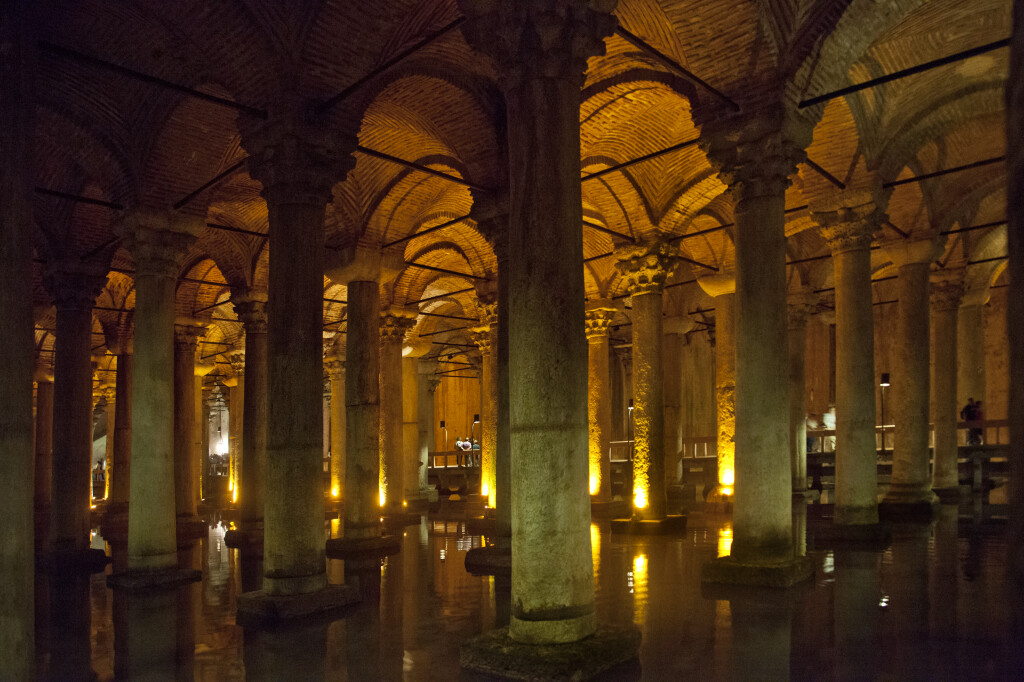Basilica Cistern
by Roy Winkelman

This is the second in the Photo of the Month series. Each month, I plan to select one photo from the ClipPix ETC website and give a few examples of how teachers can make connections to various subject areas or use the photo a springboard for class discussion or individual research.
I took this photo is the Basilica Cistern in Istanbul, Turkey. This is one of many favorite places in the city for me. It provides cool, calm retreat from the hustle and bustle of the city above. The cistern is enormous. The ceiling is supported by 336 marble columns, each 30 feet (8 meters) high. Only a little water is kept in the cistern to allow visitors to walk about on raised walkways. If completely filled, the cistern holds 2.8 million cubic feet (80,000 cubic meters) of water. It was fed by 12 mile (19 kilometer) aqueduct.
The ClipPix website includes 27 photos of the Basilica Cistern.
Your students may well wonder how skinny columns can hold up a brick roof and all the weight above this underground structure. The ceiling is a system of groin vaults. It takes four steps to understand how a groin vault works, starting with the column:
1. Columns. As you look through additional photos of the Basilica Cistern, you’ll notice that all three major orders of columns were used in its construction. Use the photos and illustrations below to identify them.
Over 100 column photos from the ClipPix ETC website:
Over 200 illustrations of complete columns and of column capitals from the ClipArt ETC website:

2. Arches. The arches sitting on top of the columns are round, Roman arches. An arch directs the weight above it to the columns it rests upon. Compare to other examples of arches below.
Photos of arches from ClipPix ETC:
Illustrations of arches from ClipArt ETC:

3. Barrel Vaults. If an arch is extended in one direction it becomes a tunnel-like shape called a barrel vault.
Illustrations of barrel vaults from ClipArt ETC:
4. Groin Vaults. If two barrel vaults intersect at right angles a groin vault is formed and all the weight of the ceiling is directed downward to the columns at the four corners.
View these examples of groin vaults on ClipArt ETC:
Discussion/Research Questions
- Round arches often have no cement or other “glue” to hold the pieces together. What keeps them from falling?
- What does the nickname for the Commonwealth of Pennsylvania have to do with arches?
- Can you find photos of three Roman era buildings that use round Roman arches? What are they?
- Some of the columns, capitals, and bases look pretty fancy for an underground structure not intended for the public to see. It’s also a bit unusual that the columns don’t all match each other. Can you guess why that might be?
- Why would Istanbul (then known as Constantinople) need such large cisterns that could hold more water than the population needed each day?
- What did Romans use to transport water to cities? Can you find a picture? What shape are the arches in the picture?
- Can you find pictures of three other buildings in Istanbul? How are they similar? How are they different?
- Today, most people live where “city water” is delivered to their homes by pipes. Yet many people still collect rainwater in rain barrels or keep an extra supply of bottled water in their homes. Why do they do this?




